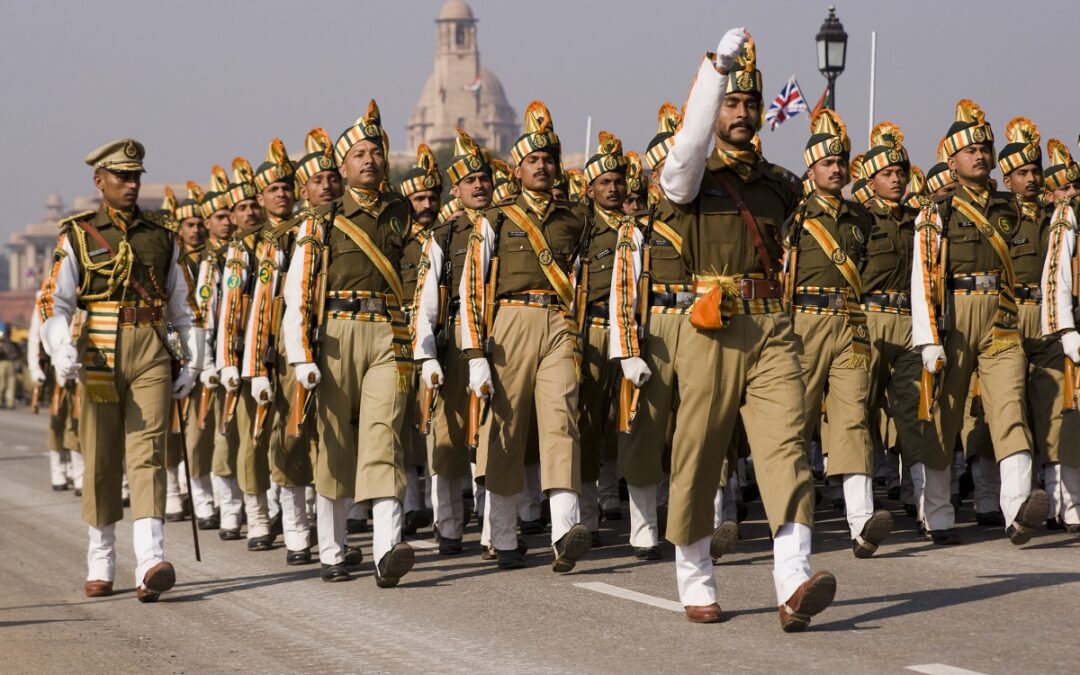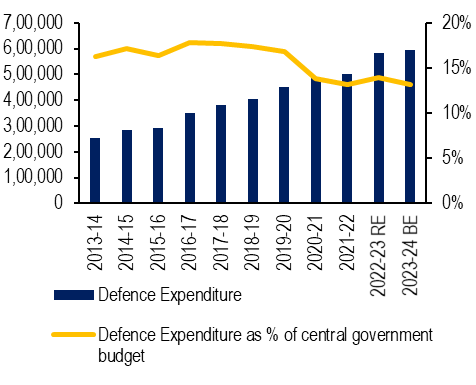Agnipath: Path of Fire
The central government announced the Agnipath scheme on June 14th, 2022, to recruit personnel below officer ranks, soldiers, sailors, and airmen to the three wings of the Indian armed forces. The recruits, youths aged between 17.5 and 23 years, or Agniveers (literally, fire heroes), now have a four-year tenure, including six months of training compared to the previous 15 years plus service followed by a lifelong pension. Upon completion, up to a fourth of these will be enlisted in the regular cadre. The remainder will leave with an approximately 11.71 lakh tax-free purse and resume their everyday lives to help with “country development”.
Later in June 2022, amid nationwide demonstrations, out-turn of large-scale violence by frustrated youngsters – triggered by the scheme taking away their accessible means of escaping poverty, the Ministry of Home Affairs decided to reserve 10% of openings in the Assam Rifles and Central Armed Police Forces (CAPFs) for Agniveers. Following which the Defence Ministry approved 10% of open positions in the Coast Guard, defence civilian agencies, and defence PSUs for applicants who match certain requirements. The main factor in the ruling government’s U-turn — from “One Rank One Pension” to “No Rank No Pension” — was economics
Note: BE is budget estimate and RE is revised estimate.
Sources: Union Budget Documents (various years) MoSPI; PR
The Intricacies of the Path: Fiscal Relief to help boost Capital Expenditure
In 2023-24, the Defence ministry was allocated Rs 5,93,538 crore. The allocation towards the Ministry is largest across all ministries and accounts for over 13% of the total expenditure of the central government. The Fiscal Responsibility and Budget Management Act (FRBM), 2003, mandates the Union and state governments to adhere to fiscal discipline by bringing the revenue deficit down to zero, and hold the fiscal deficit at 3% of GDP. Hence, the government must cut revenue expenditure and increase revenues to finance pro-capital reforms, infrastructure and development. Over the past ten years, the cost of the military’s pension has quadrupled. Since the coronavirus epidemic struck in 2020, the Centre’s finances have been even more stressed, owing to higher borrowing rates, as domestic and international monetary policies become tighter. India has also been attempting to increase domestic manufacturing across all industries, including defence, by providing a variety of incentives. Recruits under Agnipath will be paid Rs 30,000 per month, including benefits. The salary will rise to Rs 40,000 in the fourth year. The government will also contribute between Rs 9,000 to Rs 12,000 per month per recruit as its contribution to the Agniveer corpus, which will be paid out at the end of four years. No gratuity or pensionary benefits will be offered. The central idea is, savings from pension bills will be used to modernise the defence sector and support capital outlay. Neoliberal employment policies – contractualisation, fixed-term employment, and withdrawal of social benefits in different sectors of the economy, including the government sector; showcase how the plan is evolving out. Thus, within the defence budget, salaries are estimated to increase by 3% while pension is estimated to decrease by 10% in 2023-24 as compared to the revised estimates of 2022-23. Salaries and pension account for 52% of the defence budget in 2023-24 (PRS, 2023).
The Road-Blocks: Unaddressed Underlying Concerns
The Indian Army is the culmination of a history spanning from 1748. A major section of lower-rural middle class from states like Bihar, UP and Haryana still consider the Armed forces as an escape to abject poverty. Social security and dignity, with pensions enabling retired soldiers to live comfortable lives, continued to appeal to several generations of the same families. Decreasing the incentive of those enlisting on short-term contracts will lessen the “honour” of the profession, thus converting a prestigious service to contractual employment and lowering morale and motivation among aspirants. A country where unemployment already remains a major policy challenge, the concerns regarding job aspirations of youth and job provisions of ex-servicemen cannot be dismissed easily, as military trained individuals will go back to civil society, the pressures of a jobless existence weigh against the ethos. The scheme will also severely affect the economy of Hills, where defence is the primary sector of employment per se, in states like Uttarakhand, and will thus further aggravate the problem of migration. The extremely high turnover rate among young troops, the expansion of training facilities and administrative infrastructure, and the necessity for significant organisational overhaul in order to boost military recruiting, release, and retention will raise the operational and maintenance costs in long run, which the defence budgeting currently seems unprepared for. With such volatile borders, changing geo-political environment, active military threats from China and Pakistan, ongoing internal security challenges in Kashmir, the launch of the Agniveer programme is a tacit admission that the Indian economy cannot sustain the country’s required armed forces, the Government resorted to cutting the military instead of growing the economy to fund it.
Conclusion
The first batch consisting of 5000 Agniveers, went under a 31-week rigorous training at the Nashik Road-based Artillery Centre. Based on their aptitude and skill, Agniveers were channelled into four disciplines- drivers, gunners, radio operators, and technical assistants. The scheme will definitely enhance the youthful profile of the Indian Armed Forces by bringing dynamic, zealous, technically skilled, and brimming individuals to the services, thereby reducing the average age of armed forces from 32 to 26. With the first batch of Agniveers having joined respective units and deployed on ground, deliberations are going on over several aspects, such as the number of intakes per year, concerns related to pension and perks, qualitative training, and unit cohesion. However, there have yet to be any official decisions. The Government needs to carefully consider socio-economic facets before making amendments anymore. Erstwhile evidence suggests that the general pros of such schemes, which are deeply rooted in economic domains, are outweighed by fiscal-based cons.
References
-
- Loganathan, S. (2022, June 28). Pros and cons of Agnipath scheme through numbers.
- Demand for Grants 2023-24 Analysis : Defence. (n.d.). PRS Legislative Research.
- The Hindu Bureau. (2022, June 14). Centre clears Agnipath scheme.
- Wikipedia contributors. (2023). Agnipath Scheme. Wikipedia.
- Tewari, M. (2022, June 29). Agnipath is part of a larger process of defence reform and modernisation. The Indian Express.
- FRBM Act 2003 and FRBM Rules 2004, Department of Economic Affairs.




Recent Comments